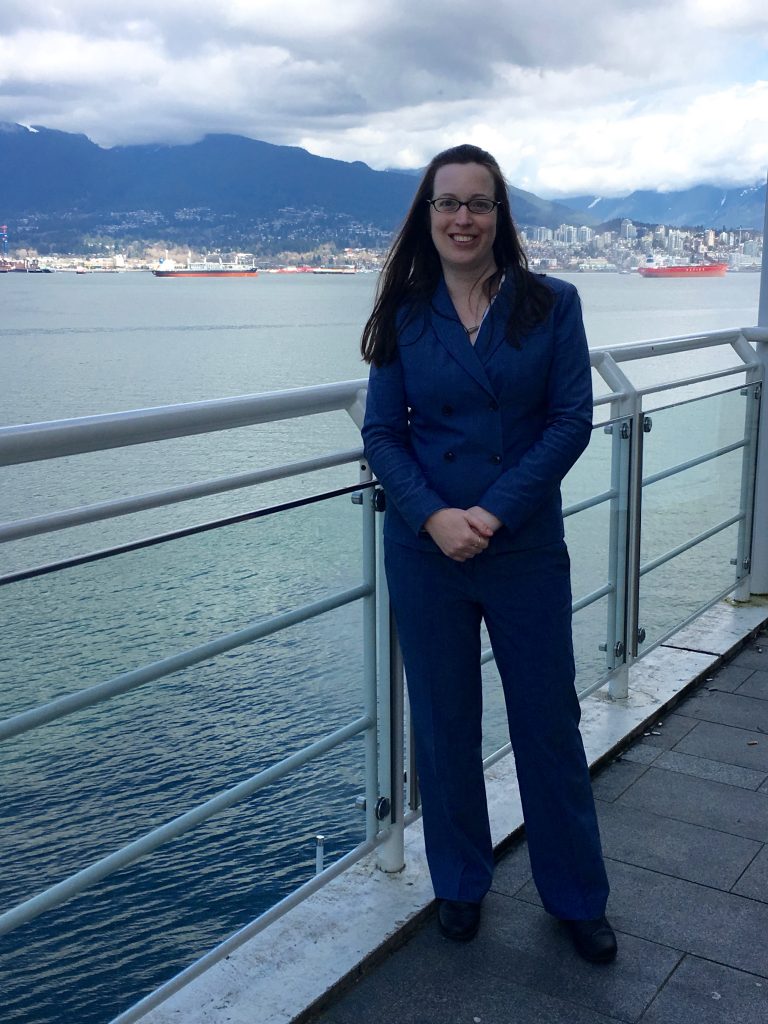Featured Alumna – Hilary Becker
Ph.D. Classical Archaeology, 2007
 A recent opportunity to deliver a lecture for the Archaeological Institute of America in Greensboro gave me a chance to visit Chapel Hill and reflect upon my myriad experiences since I completed my Ph.D. in 2007. I’ve had great opportunities to teach as a sabbatical replacement faculty member at a few, small liberal arts colleges, which was followed by a wonderful four years as a tenure-track faculty member in the Department of Classics at the University of Mississippi. I had the opportunity to relocate to the Department of Classical and Near Eastern Studies at Binghamton University – SUNY in New York last summer where I am part of a vibrant community of archaeologists and Classicists, including a strong showing by fellow Tar Heels (John Starks, UNC Ph.D. 2004, is chair of my department, and Jeffrey Becker, UNC Ph.D. 2007, is a Visiting Assistant Professor). The community of archaeologists on campus is enormous, with nearly 20 faculty members in the discipline representing world archaeology broadly. It is a large, diverse, and supportive community.
A recent opportunity to deliver a lecture for the Archaeological Institute of America in Greensboro gave me a chance to visit Chapel Hill and reflect upon my myriad experiences since I completed my Ph.D. in 2007. I’ve had great opportunities to teach as a sabbatical replacement faculty member at a few, small liberal arts colleges, which was followed by a wonderful four years as a tenure-track faculty member in the Department of Classics at the University of Mississippi. I had the opportunity to relocate to the Department of Classical and Near Eastern Studies at Binghamton University – SUNY in New York last summer where I am part of a vibrant community of archaeologists and Classicists, including a strong showing by fellow Tar Heels (John Starks, UNC Ph.D. 2004, is chair of my department, and Jeffrey Becker, UNC Ph.D. 2007, is a Visiting Assistant Professor). The community of archaeologists on campus is enormous, with nearly 20 faculty members in the discipline representing world archaeology broadly. It is a large, diverse, and supportive community.
A major professional attraction to Binghamton – in addition to its strength as a leading public research university – is a concerted focus on interdisciplinary teaching and research collaboration. During my first year I have been fortunate to collaborate with a trans-disciplinary working group, designing an innovative, team-taught course entitled “Materials Matter”. The course designers include an anthropologist, a physicist, a visual communication designer, an industrial engineer, and a research development specialist. This course will revolutionize first-year student STEM instruction at Binghamton and perhaps serve as a model for other institutions in the SUNY system (and beyond). We are approaching material sciences from a variety of viewpoints in order to challenge students to work and think in new and innovative ways. The curriculum will situate materials such as pigments, glass, or ceramics, not only within their archaeological and cultural contexts, but also provide an opportunity to consider how chemistry and physics help us learn more about the properties of materials. Students will analyze artifacts to learn how aesthetic preferences have influenced innovations in materials, just as, reciprocally, new materials and technological innovations have shaped aesthetic sensibilities. Our working group aims to bridge divides between STEM fields and the humanities and I am pleased to bring the viewpoints of a Classical archaeologist to this diverse and exciting initiative. My work on this interdisciplinary curriculum initiative grows directly out of my current research, as I am writing a monograph on the economy of Roman pigments (Commerce in color), which promises to be the first such treatment of any length on this subject.

My teaching career over the last decade has involved a good deal of innovation, with many new courses developed. The core of my archaeology teaching has focused on Etruscan archaeology, Ancient Warfare, Ancient Cities, and Roman Economy, while other courses have focused on Ancient Sicily, Ancient Athens, Roman Civilization, Roman History, and Roman Literature in translation. Latin teaching at various levels remains an important part of my remit, with ca. 40 Latin classes (and counting) offered thus far. In addition to the classroom I have been involved with facilitating study abroad and fieldwork opportunities for students in Rome and Sicily and aim to launch a new program of study in Italy from my home base at Binghamton. I have been fortunate to be recognized for my teaching, being awarded three teaching awards in 2015, one of which was “Humanities Teacher of the Year” at the University of Mississippi. Teaching is a continual process of self-evaluation, adaptation, and innovation. I am constantly thinking through my teaching strategies and am mindful that formative experiences at UNC continue to shape the kind of teacher I am. One of these key and lasting influences stems from the opportunity I had to work with Cecil Wooten, both as a teaching assistant for Roman Civilization and as an instructor in the elementary Latin program. Cecil’s model continues to inspire me (along with many other UNC alumni and alumnae) as one that is both rigorous and empowering. I often think “what would Cecil do?” in this teaching situation and draw inspiration from that foundational model.
Another formative UNC experience (among many) stems from work with my advisor, Nicola Terrenato, on my dissertation dealing with Etruscan economy. To complete that project successfully, I needed a multi-disciplinary toolkit (epigraphy, historical critique, knowledge of votives and helmets, coin weight standards, anthropological models, and more). This experience of being trained to think and write in an interdisciplinary fashion has, in particular, shaped my approach to course design so that I use multi-disciplinary elements whenever possible. For example, I structure my course on Etruscan archaeology thematically, covering more conventional topics such as tomb paintings and funerary architecture, but also introducing in-depth discussions of society, religious ritual, history, language, and warfare, so that students can have a multifaceted understanding of Etruscan culture and daily life.